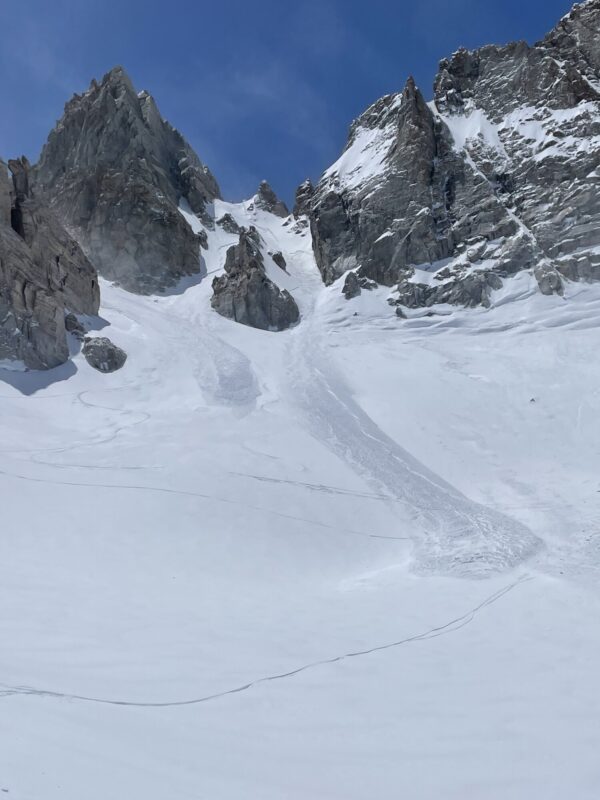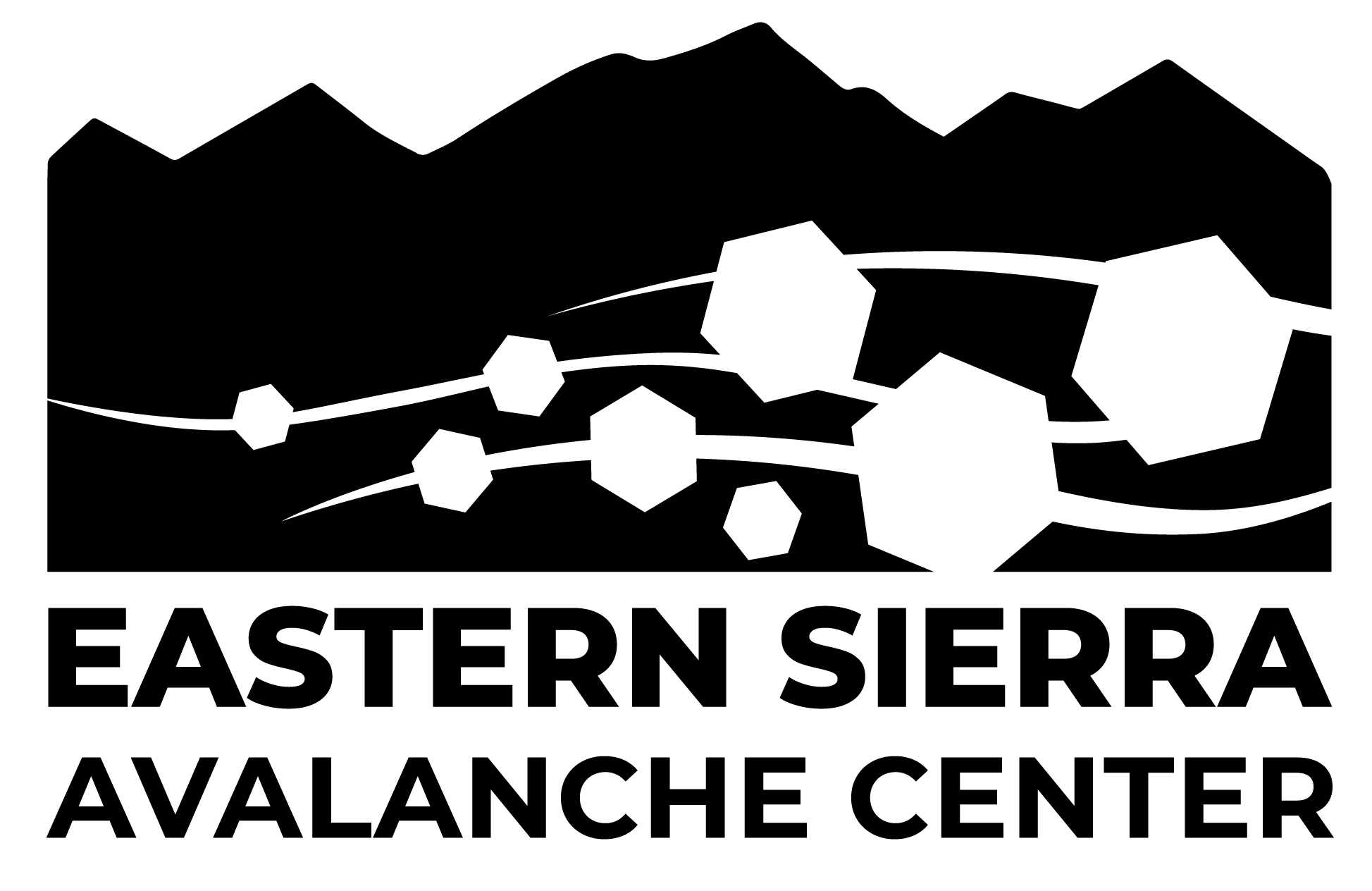Observation Details
Observation Date:
May 7, 2023Submitted:
May 8, 2023Zone or Region:
BridgeportActivity:
Skiing/SnowboardingLocation:
MatterhornObservations
Skier Triggered Windslab - Matterhorn
We went out yesterday to ski in the Horse Creek Drainage. It was a windy and cold morning with moderate winds out of the SW 20-40 mph.
There were four of us in a party and we chose to climb the W. Couloir of Matterhorn. On the climb, we noted that the slope was loaded from the fresh snow and wind. The booting was deep and there was wind effect on the surface with loose snow underneath. Traveling up the top couple hundred feet of the line we began to have concerns about stability. In spots, our hand shears yielded blocks ~8” thick breaking with moderate force on loose snow above the firm M/F crust we had felt in places while booting. In other areas, the wind crust / wind slab seemed shallower (~2”). Tapping on the snow, we heard hollow sounds in one area about 100’ below the ridge. Despite seeing these signs of instability, we chose to continue to the top of the line. We topped out at around 11:30 am.
We noted the wind slab on the skiers left side of the chute before dropping. The first skier in our party made their first turn near the center of the chute and triggered a ~6” deep soft wind slab that broke around their feet. The skier was able to ski off to the right and avoid being caught. While the start zone wasn’t large and the slab wasn’t deep, it was way too close for comfort. The slab washed down the chute and entrained a fair amount of snow, breaking a few other pockets on the way down.
The party each carefully skied the bed surface back to the moraine and then exited the canyon back to the car. Inspecting the debris at the bottom of the line, we noted it wasn’t enough snow to bury a person but would have been a scary ride that could have resulted in traumatic injury.
After returning to the car, we sat for a while to debrief and discuss the following factors:
Snowpack: The latest rounds of snowfall have not bonded well to the old snow in some areas of the range, largely because of slick crusts underlying cold snowfall. This can produce sluffs where snow is unconsolidated and slab avalanches where loaded, sliding on this bed surface. We also noticed graupel in the snowpack around the morraine, which may have played a role in forming the sliding surface.
Slope Management: It probably would not have been smart to try to turn around in the middle / upper part of the line where we saw red flags. However, it would have been wise to start the line with a few kicks on the slope from the ridge and possibly a ski cut, both of which we feel would have probably flushed the chute before anyone committed to the descent. Given the observations we made on the ascent, these types of management techniques should have been obvious in retrospect.
Complacency: Because of the time of year we were lulled into a false sense of security about stability and didn’t follow our usual process to diligently assess slopes.
Communication: Our group was moving fast and did not have enough meaningful conversation about safety and stability.
Triggered Avalanches
Did you trigger any avalanches?
YesWas it intentional?
NoAvalanche Type:
Soft SlabSize:
Size 1: Relatively harmless to peopleElevation:
11,600Aspect:
NEComments:
6" crown in start zone near ridgeline, deeper pockets broke up to 12" deep lower down in the couloir after being hit by debris from above. Initial pocket D1, overall more like D1.5 after entraining more snow in the chutePhotos:

